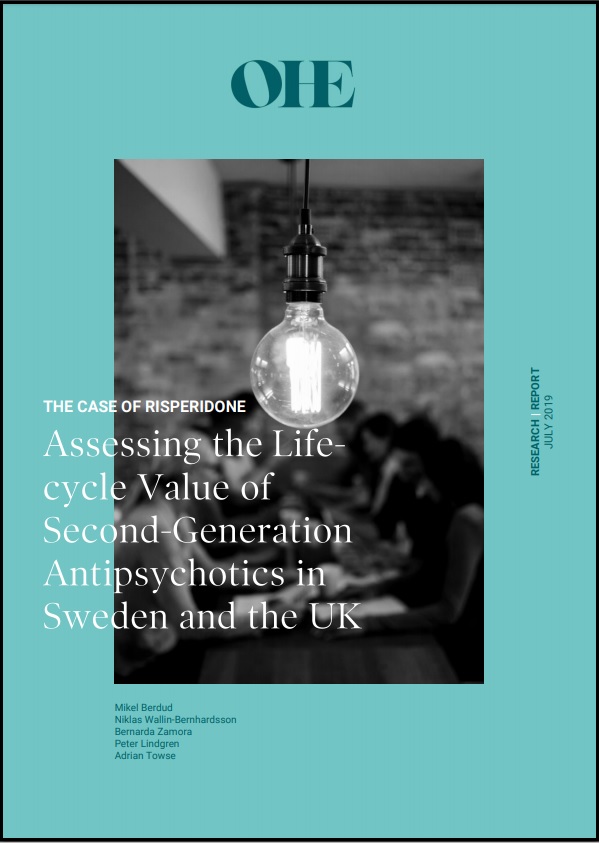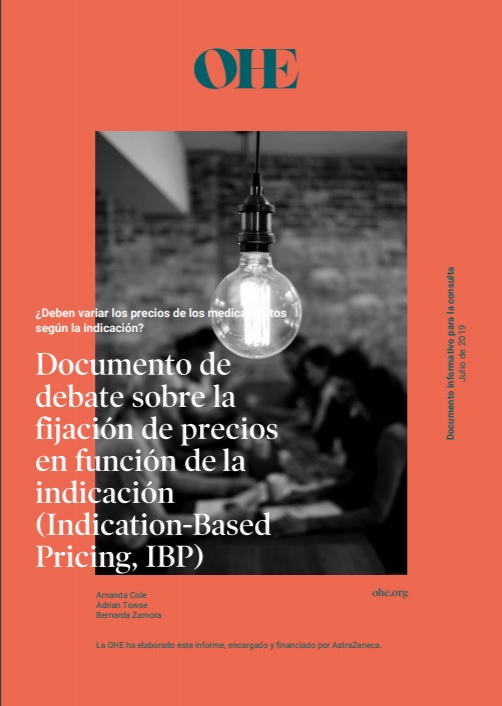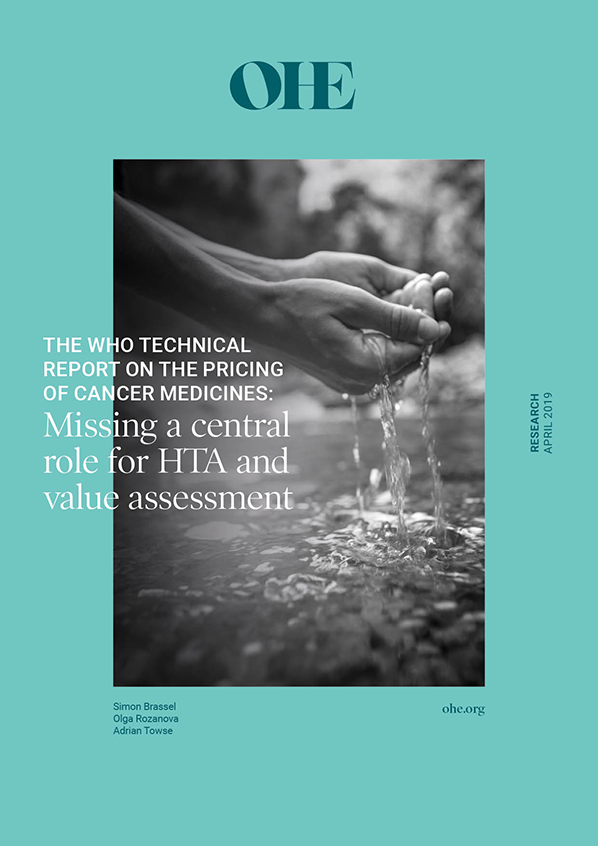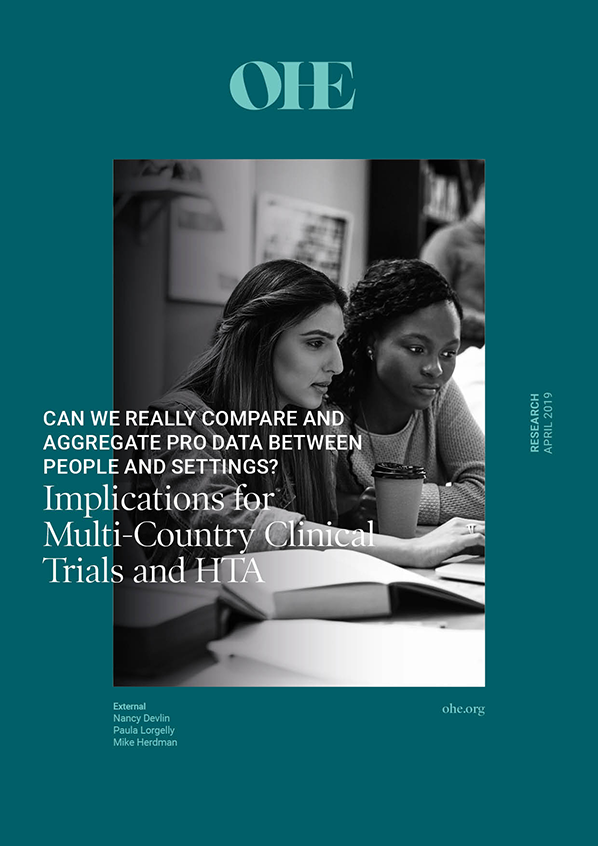Sign up to our newsletter Subscribe
Unrelieved Pain in Palliative Care in England

Sign up to our newsletter Subscribe




A summary of OHE’s activity at the 2016 winter HESG meeting, Manchester, 6-8th January.
OHE team members will play an active role in the forthcoming Health Economists’ Study Group (HESG) Meeting, Manchester, 6-8th January 2016. We have two papers being discussed and a poster presentation; come to our sessions and learn about the public’s preferences for end of life care, projections of health care expenditure and the transferability and efficiency of HTA. OHE attendees are also discussing other papers and will be available to answer questions about the wider OHE research programme.
OHE work being discussed is detailed below.
Do members of the general public wish to place greater weight on a unit of health gain for end-of-life patients than on that for other types of patients?
Authors: Koonal Shah, Aki Tsuchiya and Allan Wailoo.
Summary: The National Institute for Health and Care Excellence (NICE) has, since 2009, issued supplementary advice to its advisory committees regarding the appraisal of life-extending end of life treatments. NICE’s policy places additional weight on the survival benefits for patients with short life expectancy. It is unclear whether this reflects the preferences of the general public.
This paper reports the methods and preliminary results of a review of the published literature on this topic.
Discussant: J Nielsen
Time & location: Wednesday 6th January, 15:30, Galileo room
Projection of health care expenditure for OECD countries
Authors: Yan Feng, Toby Watt, Anita Charlesworth, Grace Marsden, Adam Roberts, Jon Sussex.
Summary: Constraining the rise in costs continues to be a major focus of health care policy in the UK, and internationally. It is important for governments to understand what is driving the rise in health care expenditure and what the impact will be over the coming years.
This paper has two main aims. Firstly to provide a developed econometric model to explain what drives changes in a country’s health expenditure and how. Secondly, to improve the projection of health care expenditure in 18 OECD countries in 2030.
Discussant: S Birch
Time & location: Thursday 7th January, 15:00, Galileo room
Value of Transferability and Efficiency in HTA
Authors: Bernarda Zamora, Grace Marsden, and Adrian Towse.
Summary: Existing literature on transferability advises that multinational trials should report country-specific cost-effectiveness results, yet typically these country specific results are only used to assess the between-location variability.
We use value of information (VOI) analysis (assuming a normal distribution) to show that country specific results can be used to calculate the value of transferability (transfer from the wide trial to the country of interest) in terms of the Expected Value of Sample Information (EVSI).
This research is being presented as a poster.
OHE team members discussing others’ research:
To ‘name’ or ‘not to name’? Observed differences in health state values for multiple sclerosis states with and without condition labels
Authors: E Goodwin and C Green
Discussed by Koonal Shah, 6th January, 13:00, Bernini room
Efficient research design: a method for using value of information analysis within an adaptive study design to determine when sufficient data are collected
Author: E Wilson
Discussed by Bernarda Zamora, 6th January, 13:00, Raphael-Vasari room
Health care expenditures, age, proximity to death and morbidity: implications for an ageing population
Authors: D Howdon and N Rice
Discussed by Yan Feng, 7th January, 10:30, Michelangelo 2
What can NICE learn from VW: would new values for the EQ-5D mean a ‘recall’ for past cost-effectiveness decisions?
Authors: J Marti and P Kind
Discussed by Paula Lorgelly, 7th January, 11:30, Michelangelo 1
An error has occurred, please try again later.
This website uses cookies so that we can provide you with the best user experience possible. Cookie information is stored in your browser and performs functions such as recognising you when you return to our website and helping our team to understand which sections of the website you find most interesting and useful.
Strictly Necessary Cookie should be enabled at all times so that we can save your preferences for cookie settings.
If you disable this cookie, we will not be able to save your preferences. This means that every time you visit this website you will need to enable or disable cookies again.
This website uses Google Analytics to collect anonymous information such as the number of visitors to the site, and the most popular pages.
Keeping this cookie enabled helps us to improve our website.
Please enable Strictly Necessary Cookies first so that we can save your preferences!